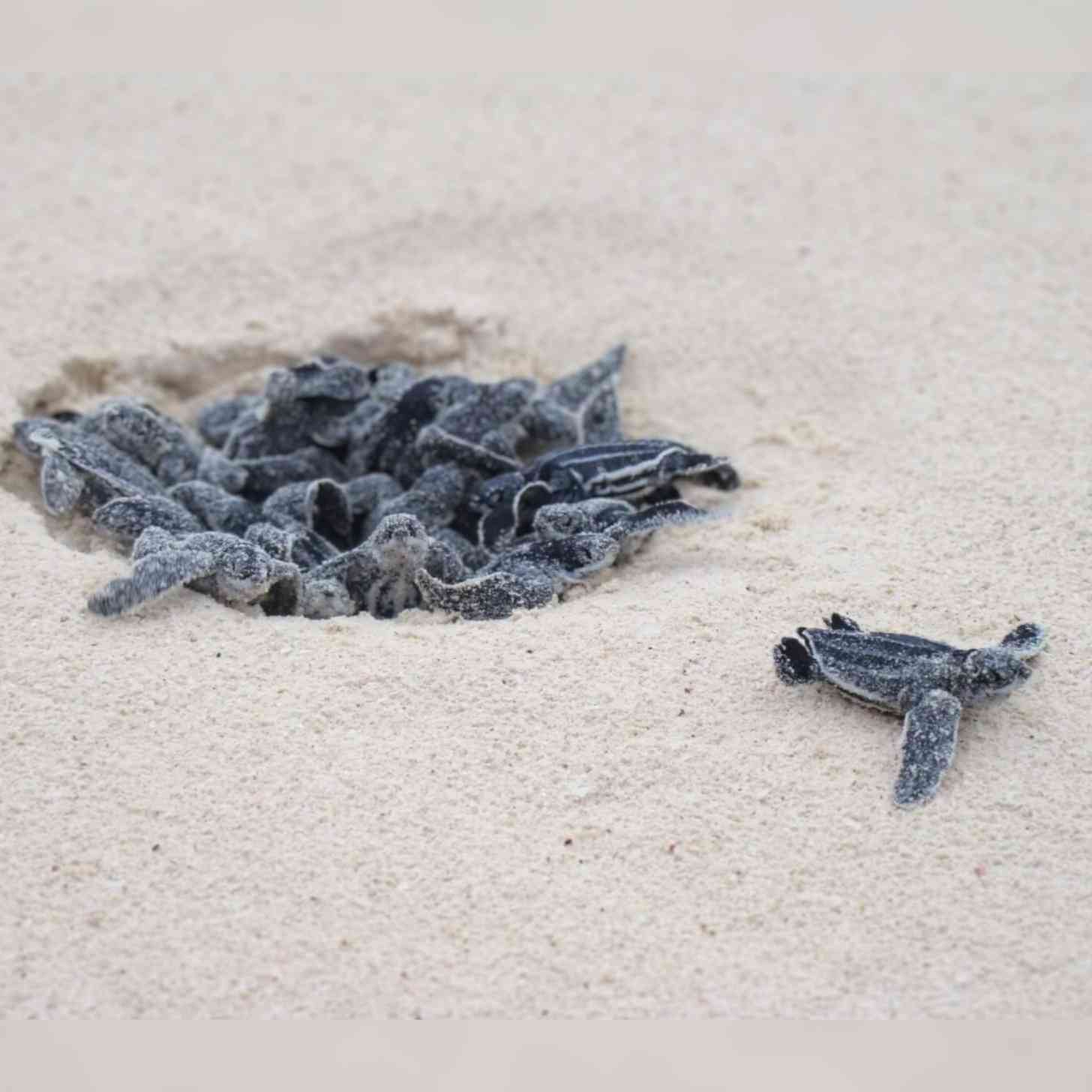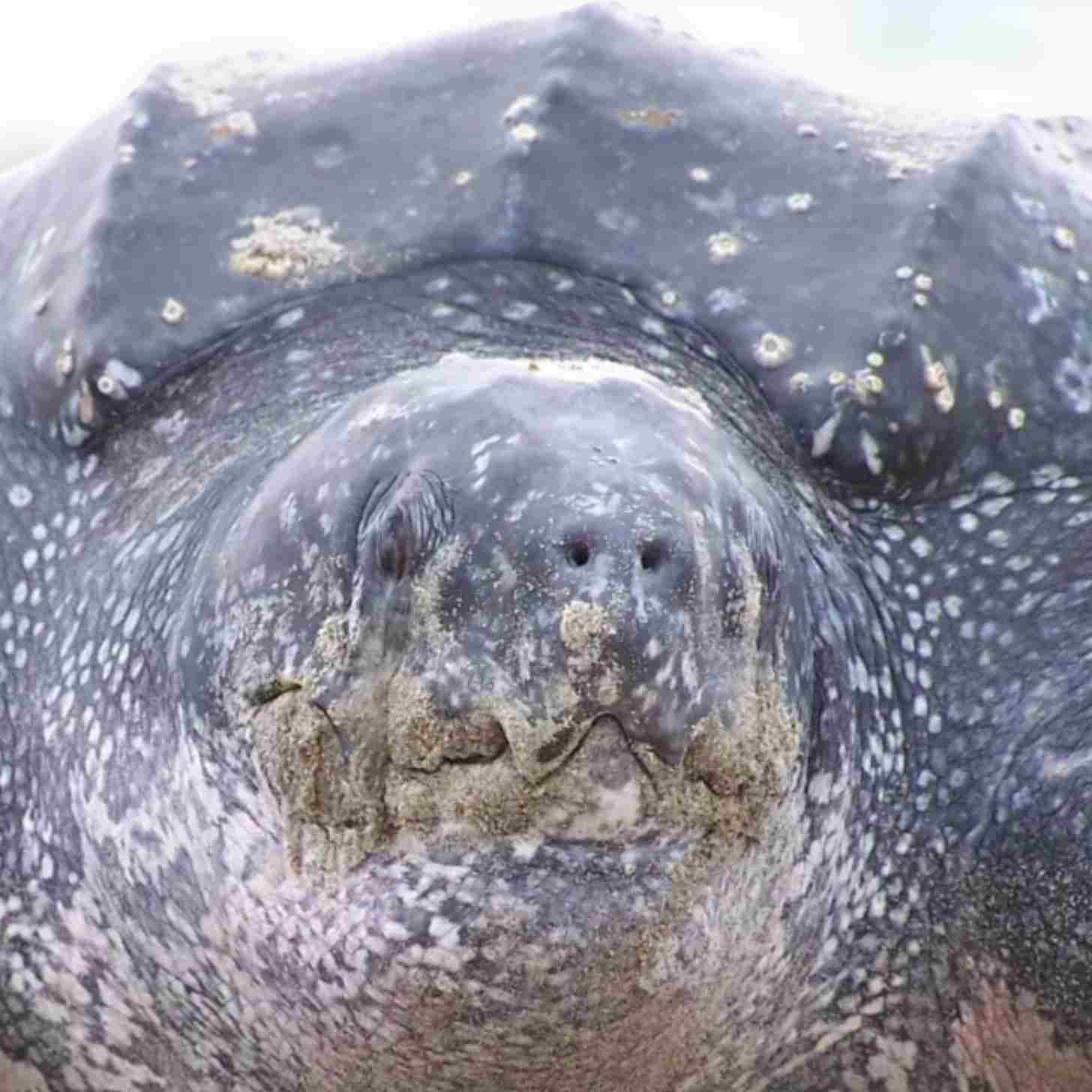In August 2024, sea turtles were on track to shatter records for nesting season across Florida’s Atlantic and Gulf coasts.
Local experts even expected 2024 to surpass 2023, when 200,000 nests were counted statewide — breaking a previous record that stretched back to 1989.
Then a trio of hurricanes hit in quick succession, as Hurricanes Debby, Helene, and Milton tore through Florida in the span of two months.
The unrelenting disasters caused catastrophic damage and significant flooding, with Helene marking the second-deadliest hurricane in half a century.
When hurricane season finally came to a close in late November, it was evident that Florida’s sea turtles — many of which are endangered — suffered from the storms. Despite a promising hatching season, hundreds of loggerhead, leatherback, and green turtle nests were washed away in the destruction.
Kristen Mazzarella, the turtle watch director of Anna Maria Island, described how drastically the local beaches had been reshaped by 15-foot storm surges.
“It’s a big shock to see a beach go from dunes, with sea oats and sea grapes and other dune plants, to just a flat piece of sand,” Mazzarella told WUFT, a public radio station in North Central Florida.
Fortunately, after a year of rebuilding, local wildlife experts are once again seeing record numbers of sea turtle nests.
“Green turtles had a strong August, bringing the season total to 61,708 nests,” Florida’s Fish and Wildlife Research Institute shared in a Facebook post. “While still behind the record 72,982 nests set in 2023, this is the second-highest green turtle total on record for Florida.”
“Leatherbacks have now reached 2,021 nests statewide, officially extending their record set last month,” the institute continued. “2025 will be remembered as Florida’s top leatherback year to date!”

In addition to noting that Florida’s most common nester, the green sea turtle, had nest counts that “remain lower compared to recent years,” the institute also shared the discovery of 10 Kemp’s Ridley turtle nests — a promising sign for the rarest sea turtle in the world.
Jack Brzoza, a sea turtle biologist at Sanibel-Captiva Conservation Foundation, cautioned that “record-high” nest counts are just “one part of the picture.”
“You can have as many nests laid as you want,” Brzoza said, following last year’s hurricane season. “If none of them hatch, that’s really not contributing much.”
Still, positive trends in nest counts are in line with population growth on a larger scale.

Two months after Florida’s Fish and Wildlife Research Institute shared their data on nest counts in late August, green turtles were downgraded from “endangered” to “least concern” by the IUCN Red List of Threatened Species.
Due to the long lifespan and cyclical nesting habits of sea turtles, Dr. James “Buddy” Powell, the executive director of research at Clearwater Marine Aquarium, said that the milestones we see today are the result of conservation efforts from decades prior.
“[Record sea turtle nesting] is likely a consequence of conservation actions that were put in place 30 years ago,” Powell told WUFT, speaking to the long-term impacts of collective community action.
Powell also noted that when measures are taken to clean up beaches, mitigate light pollution, and protect sea turtles at large, everyone benefits.
“I don’t know of any renourishment projects of beaches that are done just for turtles,” Powell said. “What’s good for the animals, what’s good for the habitat, ends up also being good for us.”
You may also like: Biologists celebrate recovery mission as 31 critically endangered sea turtles return to the Atlantic Ocean
Header image via the National Oceanic and Atmospheric Administration



